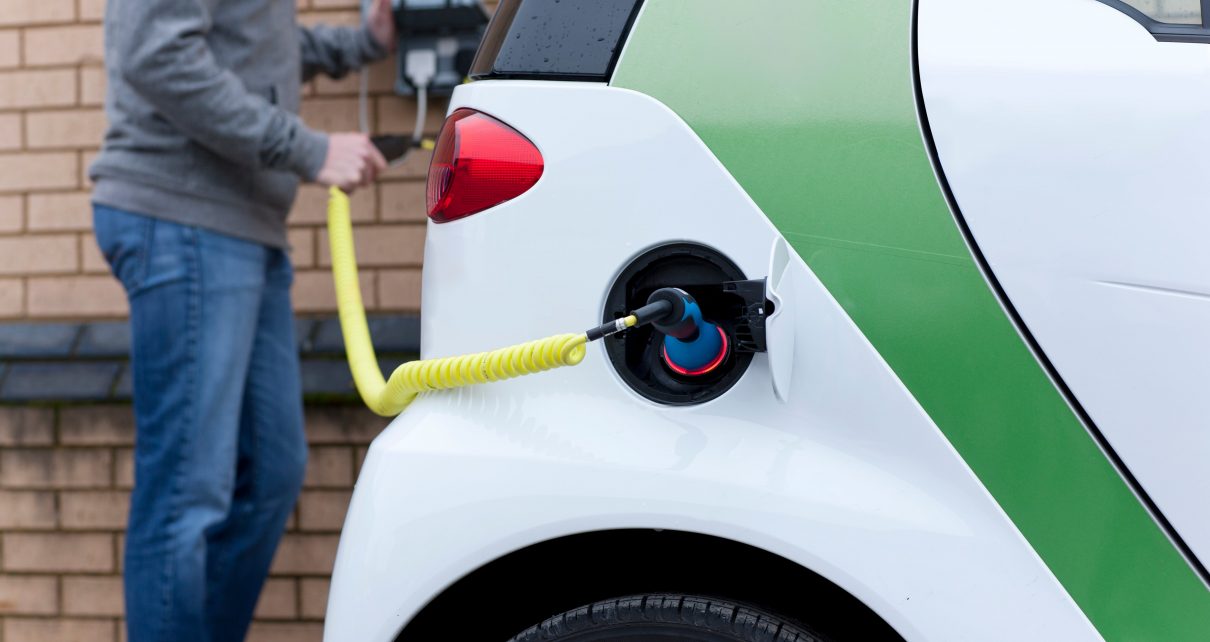A team of U.S. and German scientists is developing detectors that could remove some of the mysteries—and hazards—of using large lithium-ion batteries to power vehicles and store renewable energy.
The solution they see will rely on ultrasensitive new detectors, specialized magnetometers that can produce an image of the magnetic field of a given battery, revealing whether they have defects and showing exactly how much electric charge is left.
The scientists have shed light on age-old questions about big batteries. Some of these mysteries have lingered since the late 18th century when Alessandro Volta, a minor Italian aristocrat and amateur physicist, assembled a large stack of materials. It consisted of alternate layers of wet cardboard, silver coins and pieces of zinc.
The result was the world’s first electric storage battery. Now, research published last week in Proceedings of the National Academy of Sciences might help businesses and consumers answer critical questions that could affect their fortunes and perhaps even their lives.
One of them could be: “Should I buy this used electric car?” Another might be: “Does this electric airplane have enough charge left to get me to Chicago?”
“Electric cars is one area where you have to make your batteries really, really good,” explained Alexej Jerschow, a co-author of the study and a professor of chemistry at New York University. He is an expert in battery diagnostics.
In the hands of inexperienced consumers, electric vehicles can produce some expensive surprises. One of them is called “overdischarging.”
A gasoline car will simply stop when it runs out of gas. The battery in an electric vehicle can keep running below a certain level of charge, but then it could begin to self-destruct if the driver ignores warnings.
But there are new devices, ultrasensitive magnetometers, that can develop a picture of the invisible magnetic field surrounding a battery. It can direct lithium-ion battery makers to areas that may have unseen defects and give drivers a more exact view of the amount of charge that is left in their batteries.
Impacts to batteries in use or while they are manufactured can also introduce “hot spots” or other defects that can disable them, but the new magnetometers—that can trace changes down to tiny areas—can spot them before larger symptoms set in, according to Jerschow.
Linkages of multiple batteries the size of cars are starting to be used by power plants to store solar and wind power. That reduces the need for fossil fuels, but there have been a series of recent lithium-ion battery fires experienced by utilities in South Korea and Arizona that have caused blackouts and injured first responders (Climatewire, Jan. 29).
Jerschow said that as lithium-ion batteries become lighter and more powerful, uses for them will continue to expand. For example, small electric-powered aircraft could emerge within the next five or 10 years. Like the batteries that store renewable energy, they may help reduce greenhouse gases, but potential defects in aircraft batteries will require more stringent testing.
The approach used now at battery factories is to remove some batteries coming off the assembly line and take them apart. Sometimes the process can introduce new flaws. What Jerschow and his fellow scientists were looking for was a way to avoid that step with a process that was less invasive and expensive, but more thorough.
At first Jerschow thought the answer might come from the medical field where MRI has become a common diagnostic procedure. It uses a combination of a large magnet, radio frequencies and a computer to produce detailed images. They can reveal abnormalities of the brain, the spine and other bodily organs. But then he learned that German scientists were developing smaller, more powerful sensors that could detect much smaller magnetic fields.
Working together with Dmitry Budker, a world leader in magnetometry research from the Johannes Gutenberg University and the Helmholtz Institute of Mainz, Germany, Jerschow and other scientists developed the concept and collaborated in building the first prototype there.
The National Academy of Sciences study shows the result of this proof-of-principle demonstration. Now they have plans to identify markets for the new devices at battery manufacturers and EV factories as well as at utilities and, perhaps, some used car dealers.
“We can see certain things that I don’t think anybody has been able to see before in battery cells,” explained Jerschow. He predicts that the future market will also help ease a more distant problem: disposing of large numbers of EV batteries.
They are expected to last in cars for 10 years; then they could contribute to a major recycling problem. Some batteries will have some remaining life and may still be used for other energy storage purposes. Others will contain valuable materials that should be recycled and more toxic materials that shouldn’t be dumped in landfills.
A device will be needed to sort them out.
Reprinted from Climatewire with permission from E&E News. E&E provides daily coverage of essential energy and environmental news at www.eenews.net.




